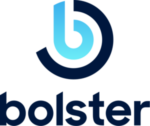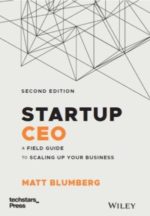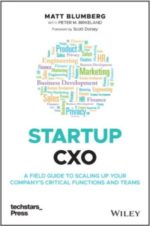links for 2006-04-13
-
Really thorough posting (battle scars *may* be present based on the level of detail) about how to best position your company for sale.
links for 2006-06-16
-
Brad tipped me off to this article — it’s a good one and draws on a lot of the work and thinking done by Jim Collins in both Good to Great and Built to Last (links to both books on my blog in the books sidebar).
links for 2006-06-05
-
Dallas Mavs owner and Internet entrepreneur Mark Cuban on Click Fraud, a notorious member of the Internet Axis of Evil
links for 2006-05-10
-
Amazon, Microsoft, and Google on big marketing spend
links for 2006-10-06
-
Brad’s colorful, quick posting on “how running is like entrepreneurship.”
links for 2006-04-07
-
Good posting from Terry Gold of Gold Systems on his experiences over the years hiring and ramping up a sales team.
links for 2006-03-28
-
Brad has a good posting today about entrepreneur accountability — along the lines of my “Forecast Early and Often” theme. — /2005/11/notsocounter_cl.html
links for 2006-08-17
-
Tom Evslin’s entertaining Top 10 Ways You Know You’re an Entrepreneur. Some may dovetail nicely if I ever write up my read of The Fountainhead through entrepreneurial lens!
links for 2006-03-30
-
A great posting about Vendor Love from Seth Godin!
Book Short: Choose Voice!
Book Short: Choose Voice!
I took a couple days off last week and decided to re-read two old favorites. One –Ayn Rand’s The Fountainhead — my fourth reading — will take me a little longer to process and figure out if there’s a good intersection with the blog. One would think so with entrepreneurship as the topic, but my head still hurts from all the objectivism. The second — Exit, Voice, and Loyalty, by Albert O. Hirschman — is today’s topic.
I can’t remember when I first read Exit, Voice, and Loyalty. It was either in senior year of high school Economics or Government; or in freshman year of college Political Philosophy. Either way, it was a long time ago, and for some reason, some of the core messages of this quirkly little 125 page political/economic philosophy book have stayed with me over the years. I remembered the book incorrectly as a book about political systems, and I think it was born consciously in the wake of Eugene McCarthy’s somewhat revolutionary challenge to a sitting President Johnson for the Democratic Party nomination in 1968. But the book is actually about business; it’s just about businesses and their customers, not corporations as social structures (the latter being more of an interest to me). Written by an academic economist (I think), the book has its share of gratuitous demonstrative graphs, 2×2 matrices, and SAT words. But its central premise is a gem for anyone who runs an organization of any size.
The central premise is that there are really two paths by which one can express dissatisfaction with a temporary, curable lapse in an organization: exit (bailing), or voice (trying to fix what’s wrong from within). The third key element, Loyalty, is less a path in and of itself but more an agent that “holds exit at bay and activates voice.”
You need to read the book and apply it to your own circumstances to really get into it, but for me, it’s all about breeding loyalty as a means of making voice the path of least resistance, even when exit is a freely available option (few of us run totalitarian states or monopolies, after all). That to me is the definition of a successful enterprise, both internally and externally.
With your customers: make your product so irresistible, and make your customer service so deep, that your customers feel an obligation to help you fix what they perceive to be wrong with your product first, rather than simply complain about price or flee to a competitor.
With your employees: make your company the best possible place you can think of to work so that even in as ridiculously fluid a job market as we live in, your employees will come to their manager, their department head, the head of HR, or you as leader to tell you when they’re unhappy instead of just leaving, or worse, sulking.
With your company (you as employee): make yourself indispensible to the organization and do such a great job that if things go wrong with your performance or with your role, your manager’s loyalty to you leads him or her to give you open feedback and coach you to success rather than unceremoniously show you the door.
Ok, this wasn’t such a short book short — probably the longest I’ve ever written in this blog, and certainly the highest ratio of short:actual book. But if you’re up for a serious academic framework (quasi-business but not exclusively) to apply to your management techniques, this short 1970 book is as valid today as when it was written. Thanks to David Ramert (I am pretty sure I read it in high school) for introducing it to me way back when!
Book Short: The Little Engine that Could
Book Short: The Little Engine that Could
Authors Steven Woods and Alex Shootman would make Watty Piper proud. Instead of bringing toys to the children on the other side of the mountain, though, this engine brings revenue into your company. If you run a SaaS business, or really if you run any B2B business, Revenue Engine: Why Revenue Performance Management is the Next Frontier of Competitive Advantage, will change the way you think about Sales and Marketing. The authors, who were CTO and CRO of Eloqua (the largest SaaS player in the demand management software space that recently got acquired by Oracle), are thought leaders in the field, and the wisdom of the book reflects that.
The book chronicles the contemporary corporate buying process and shows that it has become increasingly like the consumer buying process in recent years. The Consumer Decision Journey, first published by McKinsey in 2009, chronicles this process and talks about how the traditional funnel has been transformed by the availability of information and social media on the Internet. Revenue Engine moves this concept to a B2B setting and examines how Marketing and Sales are no longer two separate departments, but stewards of a combined process that requires holistic analysis, investment decisions, and management attention.
In particular, the book does a good job of highlighting new stages in the buying process and the imperatives and metrics associated with getting this “new funnel” right. One that resonated particularly strongly with me was the importance of consistent and clean data, which is hard but critical! As my colleague Matt Spielman pointed out when we were discussing the book, the one area of the consumer journey that Revenue Engine leaves is out is Advocacy, which is essential for influencing the purchase process in a B2B environment as well.
One thing I didn’t love about the book is that it’s a little more theoretical than practical. There aren’t nearly enough detailed examples. In fact, the book itself says it’s “a framework, not an answer.” So you’ll be left wanting a bit more and needing to do a bit more work on your own to translate the wisdom to your reality, but you’ll have a great jumping off point.



